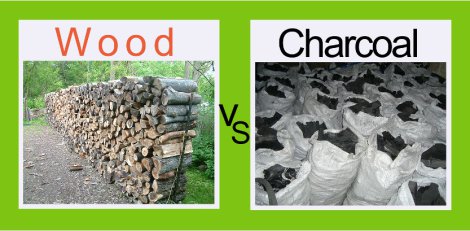Everybody knows that an Asado is only as good as the fire it is cooked upon. The steak in Buenos Aires is so good it makes you think that they must be doing something right when it comes to the flames. Over the years I’ve been introduced to quite a diverse array of techniques for prepping the primal cooking agent. In the USA, a popular sight is circular charcoal grills which allow the the fire to dictate the timing, unless they sacrifice flavor for convenience with the use of a gas grill (such a travesty). They’re also pretty big on smoking meat there for long periods of time (which is incredibly tasty, but doesn’t really factor into this discussion). In other part’s of South America, a mix of charcoal and wood is a popular touch, and in fact Chileans very often start with a charcoal base and add wood when needed to keep the heat of the fire going later into the grilling process. But the Asado kings of Argentina have a completely different way of taming the heat, which yields abundant flavor as well as constant controllable temperature. Oh… and we don’t need wood either! (We do burn it to make charcoal and embers, but do not place burning wood under our food!)
 The majority of Argentinian Parrillas (Grills) are constructed with a corridor on the side, separated from the grilling area itself. This is where the fire is created, using large bountiful chunks of charcoal placed in an elevated metal basket. The fire is started below the basket using anything that burns quickly (paper, cardboard, etc.) and the coals quickly ignite and reach an immensely hot ember stage in no time. It is at precisely this moment, that the stage I like to refer to as the “Whack-A-Mole Stage” begins. Because the individual Charcoals are so large, they need to be broken up. The raging fire can be batted down from the top, forcing the embers to break and leaving smaller more maneuverable chunks of heat below the basket where the fire was originally ignited from.
The majority of Argentinian Parrillas (Grills) are constructed with a corridor on the side, separated from the grilling area itself. This is where the fire is created, using large bountiful chunks of charcoal placed in an elevated metal basket. The fire is started below the basket using anything that burns quickly (paper, cardboard, etc.) and the coals quickly ignite and reach an immensely hot ember stage in no time. It is at precisely this moment, that the stage I like to refer to as the “Whack-A-Mole Stage” begins. Because the individual Charcoals are so large, they need to be broken up. The raging fire can be batted down from the top, forcing the embers to break and leaving smaller more maneuverable chunks of heat below the basket where the fire was originally ignited from.
Now if that wasn’t a strange (and lets not forget brilliant) enough start, the next Argentinian curve ball will catch you even more off guard. Most people from around the world would agree that the coals start below the irons (or grate), but not us, not here. Here we do it our way, and the coals start on top! How else are you supposed to properly heat up and sanitize the cooking surface? From the bottom? Are you nuts? (as you can see this sentiment goes both ways so if you’re not form here let’s just agree to disagree!) Anyways, the coals start on top and can be pushed off the back edge of the grilling iron and spread out underneath using the same shovel used to remove said coals from the Whack-a-mole drop zone.
The nice thing about this technique is if you ever need more coals throughout the cooking process you just bat away and scoop some more from below the basket before evenly applying them to the existing bed of coals below the irons. Aside from that, having the coals do the cooking instead of the flames allows only the iron to char the meat. The separation of the raging fire from the cooking coals allows the continual controlled use of heat for cooking, and avoids unnecessary charring that can taint the natural flavor of the meat. So whether you think your marinade, dry rub, or other secret recipe is the only thing that can make a proper Asado, its all going to be a lost cause if you don’t know how to tame the fire beast. Do yourself a favor, and take notes from the Argentinian style of fire taming, it can only make your personal recipe better. That I can guarantee!









